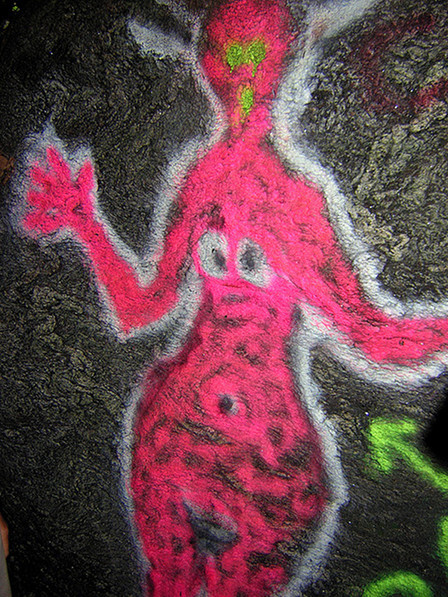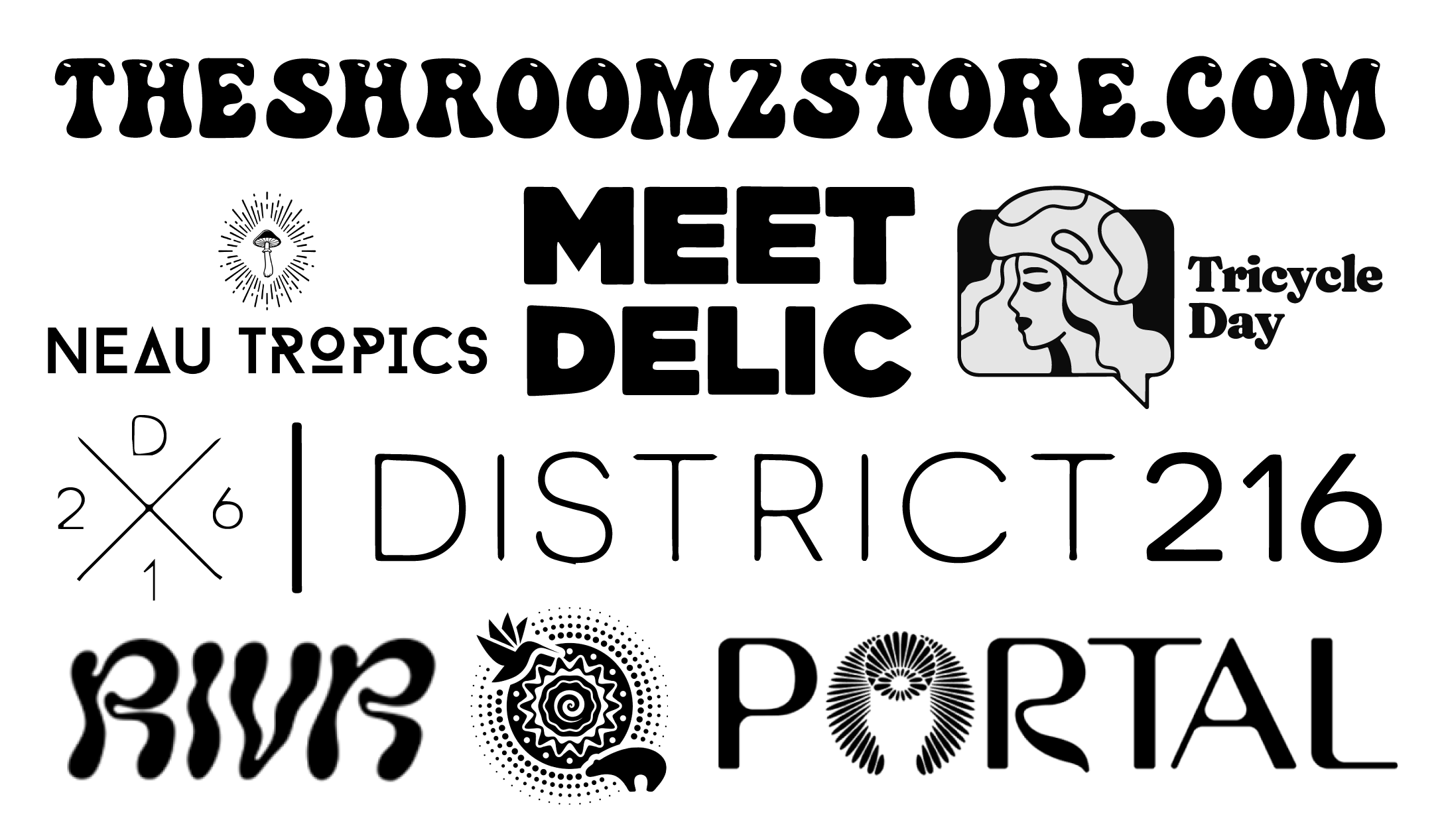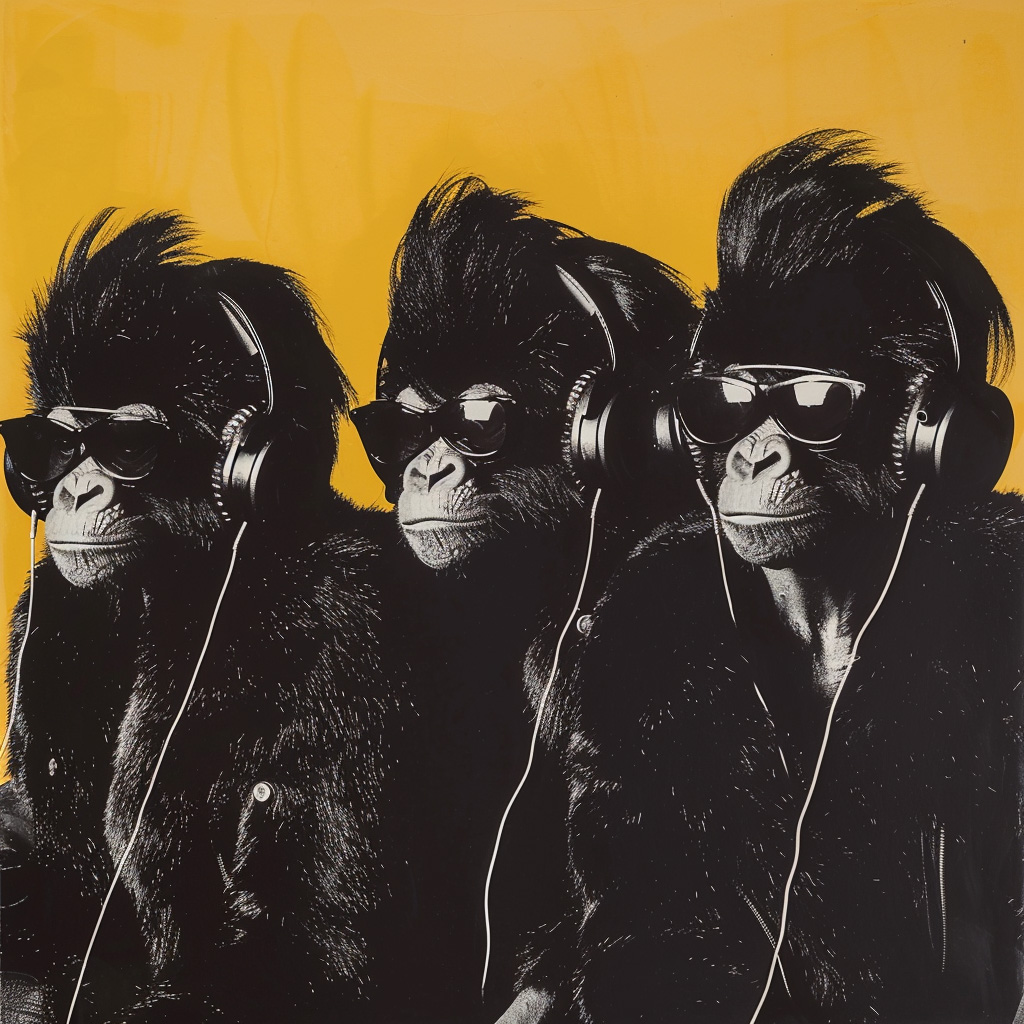She was closer to God when her vocabulary was 75 percent smaller. But she'd give away all of her five-, four- and three-syllable words if God would return to her. –Sherman Alexie, Ten Little Indians
Another thing I remember about my mother is just before I sleep and then she's only a smell and a feeling and I don't have any words. –Tom Spanbauer, The Man Who Fell in Love with the Moon
There is no document of a culture that is not at the same time a document of Barbarism. –Walter Benjamin, Epitaph
In his 1946 essay "Politics and the English Language" George Orwell noted that political language was designed to "make lies sound truthful and murder respectable." Orwell was responding to the chaos created by the rabid political ideologies that had left much of the first world in shambles. Language had become bastardized, according to the author of 1984, by a corrupt, ruling elite. By means of misdirection, euphemism, and "other doctorings," words had become unhinged from their plain sense, logical associations and instead become vehicles of imperial dread. Poisoned packets of arbitrary signification, words were now used, according to Orwell, to manipulate the public mind and keep it in a state of perpetual confusion, fear, apathy, and manufactured consent. Orwell believed that the violent propaganda of the war years showed that our very lives now depended on linguistic integrity and clarity. If there were no rules, no standard for linguistic reference, no code of grammatical "ethics," then ‘up' could be ‘down,' ‘left' could be ‘right,' ‘evil' could be ‘good,' and ‘deception' could be ‘truth.' And if this were the case, communication, and thus society, could not survive.
Social philosophers and linguists have argued extensively over whether or not this quest for a stable, "pure" grammar is achievable or even desirable. Some suggest that it is not possible to use language to discuss the limitations of language. Others feel it is somewhat dismissive and simplistic to suggest that there is a "proper" way to use a language at all. Instead, these researchers simply chronicle all of the various ways a given language is actually used in different contexts and communities. One thing not often discussed, however, is why language is so prone to the kind of misuse and abuse Orwell was concerned about in the first place. In other words, what is it exactly about words that make words so unreliable?
Like a drunken uncle, language seems to only behave itself when you are keeping a close eye on it. Otherwise, it tends to run amok and quickly unhinge itself from any standards of decency, consistency and truth. So how is it that this technology came to be the vehicle of humanity's greatest achievements and our worst atrocities at the same time? What do we gain when we "put something into words?" And more importantly for the coming global adjustment, what do we lose by doing so? To correctly diagnose the problem, perhaps we must get to the root of what Orwell was seeing in the structure of our modern linguistic paradigm itself.
The 20-volume Oxford English Dictionary contains full entries for 171,476 words in current use, and 47,156 obsolete words. To this we can add around 9,500 derivative words included as subentries. And these figures don't take account of entries with senses for different word classes (such as noun and adjective). This suggests that there are, at the very least, a quarter of a million distinct English words, excluding inflections, and words from technical and regional vocabulary not covered by the OED, or words not yet added to the published dictionary, of which perhaps 20 per cent are no longer in current use. If distinct senses were counted, the total would probably approach three quarters of a million.
The complexity of our linguistic system brings Orwell's fears into drastic relief. One feels that the more words we have, the less each one is worth. Or rather, the exponential growth of the language has also exponentially increased the possibility for corruption, misdirection and deceit. Rather than clarifying the link between truth and experience, our self-replicating linguistic memes obscure it, leading us along an infinite chain of signs and symbols. Signs and symbols that lead only to more signs and symbols. Over millennia, these linguistic artifacts accumulate over the surface of the ground of our being and cover it in reflexive, detached scraps of representation.
Philosophers, linguists and perspicacious theologians had been warning us for centuries that language could conceal as much as it could reveal. Indeed some 350 years before Orwell, Francis Bacon in Novum Organum observed that language, or rather the mechanistic and reductionistic use of it, was "too late to the rescue, and no way able to set matters right again." Bacon warned that the circular reasoning of Western logical systems "has had the effect of stabilizing errors rather than disclosing truth." And once dislodged from what he called the deeper essence of nature, language would be disconnected from its metaphysical anchor and reduced to dealing with superficial appearances. Words had become, according to Bacon, self-reflexive mimetic devices; telling us only what we have decided beforehand to be true about the nature of the Cosmos and our place in it. Indeed Bacon worried that the logic now in use "serves rather to fix and give stability to the errors which have their foundation in commonly received notions than to help the search after truth. So it does more harm than good."
The "harm" Bacon is referring to stems from a unique ability language has to reproduce errors in thought and enshrine them as fact over successive generations. "Contemporary thought is in chaos," according cultural anthropologist Dr. Rene Girard. "Where it still survives," Girard claims, "it displays pathological symptoms." Girard echoes Bacon's concern that thought is "caught up in a circle, the very circle drawn for us by Euripidean tragedy." In striving to escape from the circle, Girard suggests, "thought only enters more deeply into it, and as the radius of the circle shrinks, thought moves even faster, spinning itself into an obsession."
Girard adds that it is not by breaking out of the circle that modern thought will ultimately free itself, "but by penetrating to its very center, while somehow managing to avoid the pitfall of madness." In other words, to traverse the widening chasm between word and image, between language and experience, we need to revisit a time when we were pre-literate. For society to survive and reinvent itself in meaningful ways, we must in a sense become a "post-literate" culture. Language, especially written language, must be reconnected to its mythological origins or it will continue to confuse more than explain our intuitive experience of the living world. But the "map" to this mythic point will be found in the remnants of the very systems that led us into the wilderness in the first place. The answers will not be found by simply creating new words, or by recombining old ones. We must instead penetrate to the very heart of why we developed language to begin with. And to do this we need to work backwards from the place we have found ourselves. Or as the Lankavatara Sutra advises, "With the lamp of word and discrimination one must go beyond word and discrimination and enter upon the path of realization."
In The Art of War, Sun Tzu reasoned that every battle is won before it is fought. If this is true, then it stands to reason that they're lost before they're fought as well. The entrenched systems of thought dictate the possibilities. Choices are predetermined by the rules of the game. So the "battle" between language and experience, between word and image, was in many ways over before it even began. From this perspective, history is the project of sorting the winners from the losers. Our predominantly left-hemispheric linguistic model ("divide and conquer") has brought us to the edge of extinction. As the inheritors of the modern sociolinguistic paradigm, we are at a crucial point in our intellectual, social and spiritual development. Language must obviously chaperone this approaching shift in consciousness, but the way we use it will shape the direction and the possibilities of what the world will become.
The Word Vs. The World
For as they have been successful in inducing belief, so they have been effective in quenching inquiry. –Francis Bacon
The desire to understand and control the forces of nature led early humans to create images of the world around them. If the gods made the world, then graphic imitation was a godlike act that carried the illusion of power.[1] In his book The Alphabet Versus the Goddess, neurologist Leonard Shlain writes, "Pictographs, humankind's first attempt to preserve communication, were the precursors of writing." The paintings found in the Chauvet Cave in southern France from ca. 25,000 B.C. (seen in Werner Herzog's Cave of Forgotten Dreams), those at Çatal Hüyük in Western Anatolia from ca. 10,000 B.C., and Egyptian hieroglyphs dating from ca. 3500 B.C. are all examples of this early form of visual communication. Shlain continues, "Because images drawn from life, from experience, require that the brain first establish key elements like shape, size, and the relationship of the parts to the whole, pictographs and every other visual art form that followed fall under the right brain's purview."
The arrival of agriculture fundamentally changed this early artistic activity. Around 3000 B.C. in the Fertile Crescent, the Sumerians devised a system of record keeping called cuneiform. In what Shlain calls "the first step in a process that would reconfigure all human relations," the Sumerians carved wedge-shaped marks into clay tablets and invented the first written language. Initially heavily pictographic, cuneiform's ideograms became more abstract until each of its visual signs was a symbol that represented an idea, concept, object or action. The Sumerian scribes arranged their tablets haphazardly and had to rely on pattern recognition and spatial relationships to make sense of the images: right-brained associations that balanced the left hemisphere triggering this new abstract system produced. Pictographic writing does not affect the brain in the same way as logographic writing does. Early systems of writing like cuneiform were not based on linear placement but on spatial and thematic associations, thus triggering the right brain and emphasizing connectivity, interdependence and contextual relationships in the interpretive process. But it was a balance that did not last.
A northern tribe called the Akkadians conquered the Sumerians around 2500 B.C. Since the Akkadians spoke a different language, they adapted cuneiform by inventing phonograms: symbols that stand for syllables of speech. These abstractions increasingly replaced the earlier image-based ideograms. The Akkadians eventually stopped using most of the pictorial content of cuneiform entirely within a century of their Sumerian conquest. Furthermore, their method of transliterating their own spoken language using the Sumerian script served as the template for other cultures. Soon, variations of cuneiform appeared in all the neighboring countries.
The Akkadian scribes also discovered that meaning would be more accessible if the cuneiform figures were arranged linearly. By about 2300 B.C., cuneiform would exhibit the left hemispheric characteristic of "linearality" and be written left to right. Now the people would be forced to learn the rules of grammar. Scribes quickly introduced a new concept into the culture: the transcription of codes of human conduct, or "The Law." For the pre-literate, conduct is regulated by taboos that are acknowledged by everyone in the tribe. Elders and shamans pass down these conventions through oral teaching. Tribal mores, furthermore, discourage individuality: everyone is inextricably bound to the community at large, and for the most part, violating a taboo brings misfortune on everyone. Breaking a law, however, singles out an individual. This significant distinction encourages individuality and ego development in literate societies. Customs organically grow with the maturing of a community; laws press down upon the people "from above" and can be initiated and manipulated by a privileged, literate elite.
These newly empowered scribes transferred the authority previously vested in the shaman's chanted spells to the written word. Now, an abstraction called a law was in effect even when no one influential was present. "Civil laws bear the unmistakable imprint of the rules of grammar," claims Shlain. "They are abstract, authoritative, and elude an ordinary individual's ability to tamper with them." Laws are unique to the left-brain. They are the antithesis of spontaneity and intuition, and inherently reinforce principles of order and control.
The law book of the ancient Hebrews, the Torah, was the first written work to so heavily influence future ages. It is the anchor of the world's three powerful patriarchal monotheisms: Judaism, Christianity and Islam. Each features an imageless Father deity whose authority shines through His revealed Word, sanctified in written form. Joseph Campbell argues that the conception of God as the final, abstract Lawgiver ultimately leads to a "closed" symbol; which in turn makes us "closed" to transcendence. This fundamental change in the way we relate to transcendence creates a religion of worship instead of one of identification. "All things are to be transparent to transcendence," Campbell claims. "When a deity like Yahweh says ‘I am final,' he is no longer transparent to transcendence." He is not, as the Goddess of the older cultures, a personification of a limitless potentiality that precedes his personification. And when the deity closes himself then we too become closed. We are no longer open to transcendence and a religion of separation, of worship, is created. When the deity opens, we open, and then we have a religion of identification. We are open to receive the transpersonal, transcendent light shining through. Religions of identification emphasize connection; those of worship emphasize separation.
And in making "God" a word, the Word, we trapped the divine in a never-ending chain of empty symbolic signifiers and rigid legal pronouncements. His presence, in effect, is only confirmed by his perpetual absence. Covenants (like treaties) are written to be manipulated, broken and ignored. Laws are seldom written to set people free but rather to make more of them guilty of something. Guilty, it turns out, of simply existing. So if it is the written word that put us in this existential prison, then it cannot be the written word itself that sets us free. We must look elsewhere for salvation. For reunification. For a pre-literate, quantum "synesthesia."
The linear, alphabetic models that replaced the earlier systems were certainly easier and more portable but they triggered a massive neuropsychological rewiring of the brain. This drastically altered our understanding and experience of the sacred. Before this time, God would have been seen and felt in the sights, sounds, smells and textures of the natural world. After this, God is immediately invisible and completely abstract. Inaccessible. Behind a dark veil embroidered with, you guessed it, words. And re-presented now only in Torah. In Law. Through 613 individual, linguistic Napoleans. Pronouncements of collective shame and individual guilt. Stacking the deck in a game we never had a chance of winning but are forced to play anyway.
In The Perennial Philosophy, Aldous Huxley wrote,
"The overvaluation of words and formulae may be regarded as a special case of that overvaluation of the things of time, which is so fatally characteristic of historic Christianity…God, however, is not a thing or event in time, and to suppose that people can be saved by studying and giving assent to formulae is like supposing that one can get to Timbuctoo by pouring over a map of Africa. Maps are symbols, and even the best of them are inaccurate and imperfect symbols."
The introduction of the written word, and then the alphabet, into social discourse initiated a fundamental change in the way human beings defined culture and understood their reality. Dr. Shlain shows how it was this dramatic change in mind-set that was primarily responsible for planting the seeds of modern civilization. His study of the origins of writing reveals how alphabetic writing altered the balance of power (and the wiring of our brains) to our spiritual detriment. "Conceiving of a deity who has no concrete image prepares the way for the kind of abstract thinking that inevitably leads to law codes, dualistic philosophy and objective science, the signature triad of Western Culture," concludes Shlain. This cultural rewiring of our brains into left-dominant meme machines instituted a period of intensive philosophical and cultural progress. But it would also, ultimately, initiate our long decent into self-destruction. Over time, left-hemispheric use of language seeks to divide aspects of unified experience, label them and thus control or manipulate them. Language, in this model, is self-replicating and self-referential. Once entered, it is extremely difficult to maintain the connection to the sacred web of sensual experience and living truth. Linguistic abstractions made the modern world possible. But they also helped create all of the division and brokenness we face as well. It is time to engineer a post-literate society and embrace the irreducible essence of our pre-linguistic shared consciousness. Now we must develop new linguistic paradigms as we move into a phase of accelerated cultural transformation. Ones that code for connectivity over separation.
Epigenetic Consciousness
The day science begins to study non-physical phenomena, it will make more progress in one? decade than in all the previous centuries of its existence. –Nikola Tesla
If we don't change direction, we will likely end up where we are headed. –Chinese Proverb
The way out of this multi-generational linguistic mass hallucination is to re-envision language as part of an epigenetic process to recreate the world along the lines of compassion and connectivity. Epigenetics encourages us to abandon the obsolete belief that we are victims of predetermined genetic codes and explains how perceptions of our inner and outer environments shape our biology and behavior. Epi means above, so epigenetics is defined as control from above the genes. Scientists have discovered a second genetic "code" that controls the activity of genes and programming of DNA. Dr. Gerald Weissmann offers an analogy: "If DNA is a language composed of the letters A,T,G,C, epigenetic changes are like variations in a letter's font, i.e., C to C, or its context, i.e., C to
©."
"This new science explores the environmental factors (air quality, relationships, exercise, consciousness, diet, etc.) that control our gene expressions and the ways we function. Recent findings suggest that we are personally and collectively capable of drastically changing our gene expressions. Dr. Bruce Lipton, a cellular biologist, explains:
This new hereditary mechanism recognizes that our perceptions of the environment, including our consciousness, actively control our genes and behavior. Through epigenetic mechanisms, applied consciousness can be used to shape our biology and make us masters of our own lives."
Dr. Lipton's explanation reinforces the realization that our biology is controlled by our mental states. Apparently, genes do not make decisions about being turned on or off. Instead, they can be thought of as "blueprints" that provide potentials. The human body is structured to develop and regenerate itself from these gene blueprints. As a result of epigenetic investigations, we now understand how negative, fearful thoughts can cause DNA strands to constrict and become entangled. Conversely, it seems that positive, empathetic, and loving thoughts can result in lengthened and relaxed DNA strands.
So in reality, we use our minds to create our biological environments through our perceptions of these very same environments. Dr. Weissmann claims "neurobiologists now believe that our brains evolve through a series of choices made by individual neurons over time." These choices are made under epigenetic influence and, Weissmann adds, "are forged by selective pressure with adaptive advantage." Growth, learning and remembering take place within the real social network, just as in classical evolution. "Imagine the very different selective pressures," Weissman muses, "acting on the neural networks of young women growing up in Kabul or Minneapolis."
Epigenetics and other supporting sciences are also teaching us that the body is not a single entity and that its cells are members of a "community," just as people are citizens of a community. The body is a harmonious community of approximately 50 trillion cells, each containing every function of the body within it. Liver cells aren't just liver cells. Brain cells are kidney cells. And vice versa. Each bodily system is present in every cell. Cells perceive the body's inner environment and make bodily adjustments the same way the outer skin reacts to perceptions of its environment. The cells' "perceptions" of their external environment change our biology, chemically and electrically. Epigenetic controls select "potentials" from the blueprints and genes are switched on or off. Life is, quite literally, determined as it happens.
Dr. Jim Walden suggests, "Epigenetics encourages the belief that problems caused by the mind can be fixed by the mind." In order for cells to respond positively, however, they must be given the right perceptual thought signals. Walden claims "an estimated 70 percent of all continuous-loop thoughts running through our subconscious minds are negative and redundant." In order to change our thought patterns and improve gene responses, therefore, we need to think of the subconscious as a machine. This machine is itself not "good" or "bad," Walden says, "just an accumulation of programs that become established and dominate our thinking." The problem worsens when the conscious and subconscious minds do not communicate. Therefore, Walden maintains, "we must assume responsibility for eroding unhealthy, reactive subconscious programs and devote time and repetitive effort to developing mindfulness that will facilitate healthy perceptions of our environment." This radically remodeled perspective of traditional biology and genetics necessitates a shift in our understanding of the mind/body split. Certainly, the immaterial mind and non-local consciousness can no longer be dismissed as the stuff of folklore and mythology. Furthermore, we must collectively change the epigenetic conditions of thought, starting with the way we perceive and use language, if we are to evolve through the challenges that lie ahead of us as a species.
This is so simply because of the fact that for all of our words, we are no closer to truth. For all of our laws, we are no closer to justice. From beneath the graying clouds of codes and creeds, we are hidden from the light of transcendence and rebirth. This ancient schism created before the modern world (that in fact created the modern world) has not yet been healed, individually or collectively, because we have not diagnosed it properly. The universal holographic unity remains visible, for the most part, only in fractals. Deliberately and relentlessly we have been denied the opportunity to expand human consciousness. Epigenetically coded not to expect (or even dare to imagine) real, meaningful change.
The Visible Logos
That same mind that coaxed us into self-reflecting language now offers us the boundless landscapes of the imagination. –Terence McKenna
Terabytes of our personal data now move through the complex networks of our information systems and digital infrastructure, and yet we remain essentially in a state of claustrophobic isolation from one another. In spite of the white noise generated by the polyglossia of this exponentially expanding, multinational cyber choir, we seem increasingly disconnected from ourselves and from the world. We yearn to transcend that crippling disappointment felt by Goethe's Faust when he thought of the seemingly infinite chasm between the world he could imagine and the world that actually existed. But the road there is covered in weeds and debris. We cannot see the proverbial forest for the trees, especially because we have clear-cut most of it to make way for mega churches, Wal-Mart Superstores and mixed-use condominiums. We are seeking, simply, a return to the multi-dimensional and unified experience of what it means to be alive. This is the actual "place" of our common origin and thus our rightful inheritance, one and all. But the map to that "Land of Promise" is no longer clear. Although it remains hidden within each of us, it has been buried under centuries of oppressive, self-reflexive linguistic artifacts. How then, to recover it? What can we do to most efficiently and inclusively heal this socio-existential schism that is the cause of our great mythological isolation?
For millennia, this "map" was intuitive. Passed down through the epigenetic tools of tradition, mythology and culture, it literally existed within our individual and collective consciousness, even at the cellular level. This is how a society kept itself healthy, balanced and connected. But some of us decided to burn the map, others started worshiping it (instead of following it to its sacred "destination"), and still others have learned to ignore it entirely or replace it with the self-replicating programs of greed, materialism and ego-driven religious ideology. Many have torn off a single section and now claim their fragment holds the only true path to our common mythological motherland.
Whatever the case, we have been spinning in circles ever since we replaced the visible, intuitive components of lived experience with the invisible abstractions of laws, codes and creeds. In short, we exchanged grace for grammar; traded love for law. And in doing so, we have surgically-removed the sacred from the cosmic dance of our genetic expression and put it in a book on a table across the room. A book nobody was able to even read for centuries, regardless of whether or not they were one of the very few allowed to read anything at all. Literacy put a permanent, ever-widening wedge between the sacred and the profane. Violently snapping the cosmic umbilical cord that connected us to nature and to the Other. Interpretation now precedes experience. The multi-dimensional, intuitive, and immediate essence of archaic, sacred vision has been reduced to black and white, two-dimensional, linear linguistic games. We have become married to a conclusion instead of to a process.
To rediscover this unified, holographic prism of potential and intention, therefore, is the project and evolutionary purpose of synesthesia. We must reexamine how we see, how we hear, and how we think in order to re-harmonize ourselves with and within the evolving tapestry of evolutionary consciousness. Francis Bacon argued,
"It is idle to expect any great advancement in science from the superinducing and engrafting of new things upon old. We must begin anew from the very foundations, unless we would revolve forever in a circle with mean and contemptible progress."
Technology has allowed us to build another Tower of Babel. The Internet, when seen as the infinitely expanding epigenetic pillar of our shared hopes and aspirations can become our collective response to that Terrifying Impulse that seeks to divide and conquer us. With the right vision, we can re-envision the Web as the mechanism by which we achieve the triumph of a commonality of mind and purpose. And we can do this right "under the nose" of the One above and within us all who seeks to keep us all apart. But first, we need to learn, to remember, how to speak the same language. And that language is not English. Or Chinese. Or Spanish or Farsi or ASCII. In fact, it is not a language in the traditional sense at all. It is, quite simply, the love language of evolutionary bonding produced by the wedding dance of genetics and epigenetics. The sacred marriage of Potentiality and Actuality, and their sacred child named Change. This cosmic convergence is the only constant, and our language must once again reflect this or it will continue to replicate the destructive, misogynistic memes of the past several millennia. This new millennial sacred marriage cannot take place, however, until we divorce ourselves from the way we have been seeing the world for the past 3500 years. Terence McKenna argues,
"We need a new set of lenses to see our way in the world. When the medieval world shifted its worldview, secularized Europe sought salvation in the revivifying of classical Greek and Roman approaches to law, philosophy, education, aesthetics, city planning, and agriculture. Our dilemma will cast us further back into time for models and answers."
It is becoming clear that the way forward is behind us. Way behind. This means reaching back in time to models that were successful fifteen to twenty thousand years ago. Our ideas must again be based in the visible logos and not simply in the hopeless linguistic abstractions of the unhinged left hemisphere. We must each hold up our sliver of the fractured mirror to reflect the undifferentiated whole. And if we do, together, the reflection we see will be the One we have so desperately sought these many millennia. To embrace and expand the "sacred landscapes" of the non-local mind will allow us to manifest this unity into the physical spaces we share with each other and with other species of the biota. We must internalize our shared divine nature through the consciousness of our biochemical connectivity and interdependence. Then we can proclaim along with Dr. Neil DeGrasse Tyson, that "We are all connected: to each other, biologically; to the earth, chemically; to the rest of the Universe, atomically." McKenna continues,
"The process begins by declaring legitimate what we have denied for so long. Let us declare nature to be legitimate. Reestablishing channels of direct communication with the planetary Other, the mind behind nature…is the last best hope for dissolving the steep walls of cultural inflexibility that appear to be channeling us toward true ruin."
And to this notion of interconnected, visible logos we must add the meme of visible sound or auditory color. One need only listen to the sacred harmonic space created by Tuvan throat singers or Sufi Qawwali hymns to realize that it is through vibrational space that the psycho-spiritual world materializes. Hindu rishis chant the earliest Brahmin charms that shook the Cosmos to life. African tribal drumming resonates at the precise frequency of maternal cosmic birth. And even the Hebrew Bible has Yahweh speaking the universe into existence.
"As I came to discover, a sacred space is far more than just a matter of religious belief. It is a special kind of resonant chamber designed to enhance…communion and focus vision," claims author Richard Merrick in "Unveiling the Ancient Science of Sacred Spaces." Merrick has done innovative work exploring what he believes was the real purpose of ancient temples and many medieval cathedrals; long ago suppressed by the Roman church and attendant institutions of power and control. By analyzing the layout of Scotland's 15th-century Rosslyn Chapel, Merrick believes that the "Venus Blueprint" he has unveiled was the template for creating sacred, visible acoustic space. Ancient architects in places like those Merrick studies in Europe (as well as those unearthed in Chichen Itza, The Temple of Kukulkan and countless others across the Yucatan peninsula) created visibly auditory landscapes that elevated consciousness and focused energy. Epigenetic engineering that tuned the mind to spirit and away from chaos and white noise. Merrick argues,
"Acoustically speaking, these dimensions make Rosslyn chapel a natural resonance chamber that propagates sound evenly while suppressing reverb and echo. It does this because of the damping effect of the golden ratio. As an ideal acoustical damping enclosure, Rosslyn reflects the same damping effect Venus had on Earth during the harmonic formation of the solar system."
Merrick has discovered similar designs in many other European cathedrals and classical temples including: St. Peter's Basilica, the Roman and Greek Parthenons and even Solomon's legendary Temple of Jerusalem. Merrick's research led him to conclude that these structures were:
"Built to teach the world about the Vedic concept known as the Sound Current that flows through everything. It teaches how the pentagonal resonance of Venus was used in ancient temples to ask the goddess to fertilize crops and assist in childbirth. But most of all, the Lady Chapel teaches us through her musical architecture about spiritual freedom and how to liberate the mind."
The groundbreaking work of Stanislav Grof regarding "Holotropic Breathwork" is instructive here as well. It is through breath and sound that we can weave an epigenetic web of vibrational energy that can directly affect genetic expression. When we see that sound is the essence of our humanity and the source of creation, we will understand finally that the visible space between the sounds, the sacred breath of creation, this ever reverberating silence that is the perfect sound, is the same breath that animates all living things. Or as Thich Nhat Hanh says, "Breath is the bridge which connects life to consciousness, which unites your body to your thoughts." We are the sound-making creatures. It is the only one of our senses that we actually create. Sound is the beginning of religion, the foundation of magic, and the basis of dance and music. Sound is the source, vehicle and end of all knowledge. We merge ourselves into another when the vibrations, the intentions, of our speech cross their cellular membranes and actually enter their genetic matrix. Epigenetically speaking, how you respond to that guy who cuts you off on the freeway will affect not only your genetic expression, but the way your grandchildren deal with stress as well. We laugh, and the world creates itself anew. We scream and the skies tremble with a thousand tempests. It appears, then, that we can use our auditory powers to generate visible, metaphysical conduits to manifest and direct our experience of the sublime. Through sacred sound we epigenetically create what Merrick calls "a psycho acoustical space capable of triggering elevated states of consciousness."
So then we must rethink thinking itself, and rebuild our understanding of what it means to be alive upon the pillars of epigenetic, non-local consciousness and quantum interconnectivity. We can, simply, speak a new world into existence. With one voice, we must say back to the great I AM, "SO ARE WE!" And in this proclamation, new songs of freedom, color and dignity will emerge. As quantum physicist Amit Goswami has claimed, "The call for our democratic leaders is clear…it is to take actions that will unblock the evolutionary movement of consciousness."
What is before us as a species is a model for understanding mimetic expression in the same way we are coming to understand genetic expression. In essence, just like genetic expression is directed and influenced by epigenetic influences in a process of mutual co-creation, so too our ideas, our memes, are directed by an epi-mimetic mind: a feminized, vegetative gnosis that is non-local, collective, and the true ground of our being. The harmonization of opposites, she materializes when the left hemisphere is put in service of the right and disappears when the process is reversed. McKenna suggests,
I believe that it is the depth of the relationship of a human group to the gnosis of the vegetable mind, the Gaian collectivity of organic life, that determines the strength of the group's connection to the archetype of the Goddess and hence to the partnership style of social organization. That same mind that coaxed us into self-reflecting language now offers us the boundless landscapes of the imagination. Without such a relationship…we stand outside of an understanding of planetary purpose. And understanding of planetary purpose may be the major contribution that we can make to the evolutionary process. Returning to the bosom of the planetary partnership means trading the point of view of the ego for the intuitional trans-linguistic understanding of the maternal matrix."
And this means seeing, hearing, thinking and speaking in new ways. We have the technology, in other words, to help us remember how to experience ourselves, how to experience the world, in ways that are simultaneously ancient and brand new. A new awakening to our oldest selves.
In spite of this seemingly insurmountable linguistic wall that we have erected over the past four millennia between the sacred and the profane, inside whatever window one has the courage to peer are signs of the next great turning. The clarion call echoes in the distance of this new digital landscape, beckoning us forward, to walk out in a leap of faith into the great beyond. We are on the edge of a new humanity. A post-linguistic era of shared consciousness and evolutionary ethics. And the elite know this, so they are trying to pull the plug. But the Frankenstein has a life of its own now. Pandora's Box has been redrawn as a multi-dimensional, quantum digital landscape. Innovative minds like Harold Rheingold, Douglas Rushkoff and many others are creating new models for how we can use digital space to educate and change the world. But to do this, we must banish the negative, isolating and self-consuming hallucinations of the old models and clear the way for the union of nature, art and science. Or as McKenna asserted, "The archetype of renewal is seeking, in thousands of ways, to be reborn." We are all midwives to this birth, if we have the courage of insight to see it manifesting.
Greet the glad miracle. Thought's new found path
Shall supplement henceforth all the trodden ways,
Match God's equator with a zone of art,
And lift man's public action to a height
Worthy the enormous cloud of witnesses.
–Ralph Waldo Emerson
[1] This is why Islamic law, for instance, forbids artists from depictinghumans, animals, and plants in works of art. To re-present such things is to tread dagerously close to the divine creative impulse.
Image by kwalbolt, courtesy of Creative Commons license.















